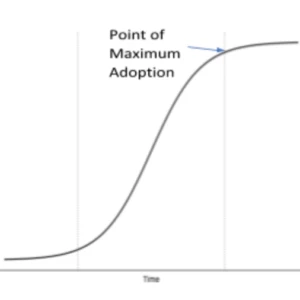An Easy Test for Emissions Reduction Potential
Clean Energy Ventures’ Simple Emissions Reduction Calculator (SERC) provides a quick understanding of greenhouse gas (GHG) reduction potential for climate tech startups. The calculator is simple to complete with information most entrepreneurs already have on-hand.
The potential of an investment to reduce greenhouse gas emissions is a core element of Clean Energy Ventures’ investment criteria. This calculator acts as a simple test of whether a prospective investment’s GHG reduction potential could align with our investment criteria. After passing this calculator, more aggressive modeling and testing of assumptions is always performed during a detailed due diligence process. Clean Energy Ventures investments must demonstrate the potential to mitigate 2.5 gigatons of CO2e between initial investment and 2050.
SERC is now widely available to our community. We hope opening up this tool publicly will give all startups the tools they need to understand and share their emissions reduction potential. We also hope interested climate-focused investors will find it valuable in their quest to find climate tech startups worthy of their dollars and support.
Making Emissions Assessments Accessible for Entreprenuers
The startups and entrepreneurs we encounter frequently have large and meaningful ambitions for mitigating GHGs. Yet, they often struggle to effectively quantify their potential climate impact. The broad range of factors and possible assumptions often make this task overwhelming. Entrepreneurs then chose to focus their time to more immediate concerns. The Simple Emissions Reduction Calculator was developed with ease-of-use in mind.
Using the Simple Emissions Reduction Calculator only requires the entrepreneur to know two categories of information:
- How many tons of GHGs are reduced by each ‘unit’ of their product or service
- How many units they believe will be sold over time
The unit impact and market potential is typically information that entrepreneurs determine before seeking investment. And, most potential investors, incubators and accelerators request this information during the application process.
Frequently Asked Questions
There are only two categories of information we are requesting:
- How many tons of GHGs are reduced by each ‘unit’ of the product or service
- How many units will be sold
You may define a ‘unit’ of your product any way you like, as long as you are consistent. For example, it can be a square foot of a building you are providing energy efficiency services for, a year of service for a service you are providing, a product being adopted for which you licensed a core piece of technology and are receiving a royalty for, or a discrete product you are selling directly.
Please include all significant emission reductions that would occur throughout the world where your product is adopted that would not have occurred otherwise. You may combine any kWh impacts into your answer for kWh savings per unit, and you can combine any other emission savings into your answer for how many tons of CO2 are abated per year per unit. Please simply explain what impacts you included and how you arrived at them in the final question. Please also be sure to include direct and indirect effects that you might not be able to quantify in your explanation as we understand that it can be challenging to gauge the impact in some cases.
Please include these emissions reductions as best you can and explain them in the text field. We are looking for the best case scenario that is feasible and can be justified.
We assume 1.058 pounds (or 0.000529 tons) per kWh reduced, based 2018 EIA U.S. estimates for the global electric grid. We know that different regions will have different levels of carbon intensity, and we believe that the carbon intensity will go down everywhere over time, but we intend to be generous in this assessment, so we simply use the current global carbon intensity for all years between now and 2050. If you can justify a higher carbon intensity for the kWhs your product will save between now and 2050, please let us know.

Please provide the number of years between now and the year that the point of maximum adoption is reached. We recognize and expect that year will likely be past the ‘startup’ phase of adoption and could be after the acquisition of your startup by a major global player. That’s OK; our aim is to measure your impact on emissions, not life of the business entity.
Clean Energy Ventures is looking for the potential of cumulative GHG emission reductions of 2.5 gigatons by 2050. Additionally, members of our sister organization of individual investors (The Clean Energy Venture Group) have more varied environmental criteria. While the potential to mitigate climate change is important to members of the Group, they may not adhere to a specific metric, and may be guided by other factors in addition to GHG emission reduction.

More Questions?
Reach out to Shanbor Gupta on our team. Shanbor led the project development of SERC and drives the GHG analysis components of Clean Energy Ventures’ due diligence process. Please don’t spam him!
SERC is Not the Final Answer
The Simple Emissions Reduction Calculator is the first step in a journey of quantifying emissions reduction potential (ERP). This calculator makes many simplifying assumptions intentionally and is meant to provide the “benefit of doubt” to the technology or business being assessed (i.e. if we’re not sure if you could meet our metric, we will explore further in due diligence). This calculator assumes S-curved shape of adoption of products; it holds most market and grid dynamics in static values (assuming the grid will not become less carbon intensive over time, for example); and it provides just a single number as an output. We make these assumptions because our goal is to mutually achieve an order of magnitude understanding of emissions reduction potential in order to warrant future investment conversations.
SERC is not meant to be the end-all of ERP assessment. Other more comprehensive assessment tools, such as CRANE (Carbon Reduction Assessment: New Enterprises), can be a complement to SERC and provide more detailed insights on emissions reduction potential.
Our goal is for entrepreneurs, investors, and society at large to become ever more aware of the critical need to massively reduce GHG emissions, and to focus on those solutions that will have the most impact on doing so.


